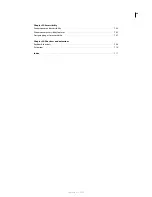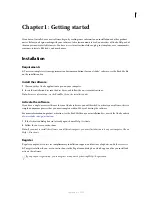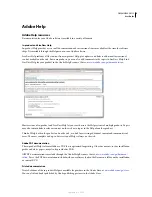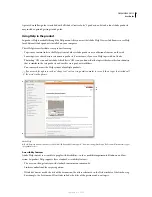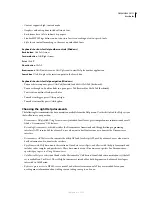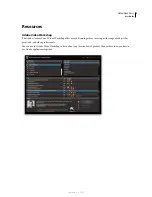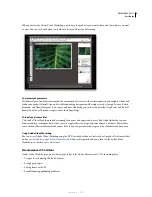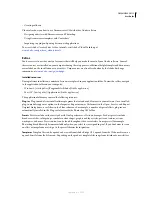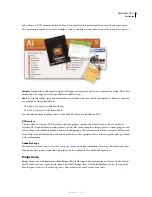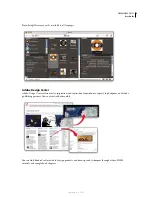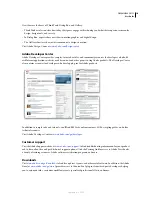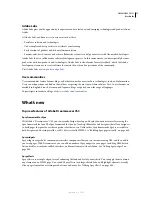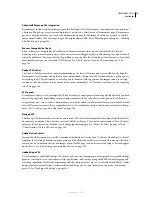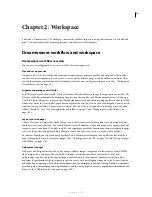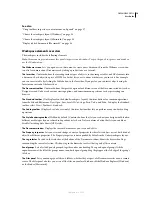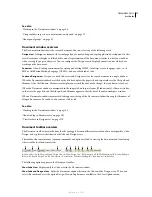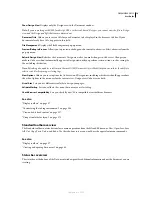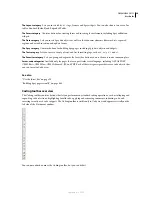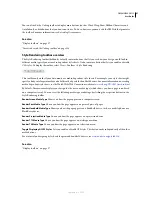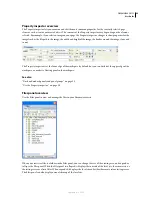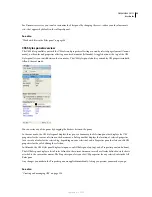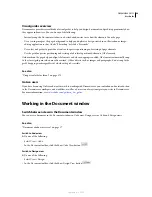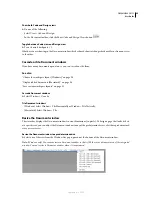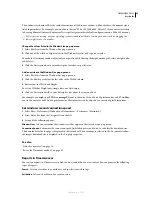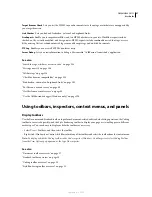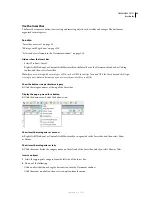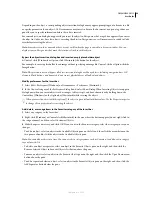
DREAMWEAVER CS3
User Guide
14
Create pages by hand coding
Coding web pages by hand is another approach to creating pages. Dreamweaver provides easy-to-use visual editing
tools, but it also provides a sophisticated coding environment; you can use either approach, or both, to create and
edit your pages. (See “Working with page code” on page 301.)
Set up a web application for dynamic content
Many websites contain dynamic pages that allow visitors to view information stored in databases, and usually allow
some visitors to add new information and edit information in the databases. To create such pages, you must first set
up a web server and application server, create or modify a Dreamweaver site, and connect to a database. (See
“Preparing to build dynamic sites” on page 491.)
Create dynamic pages
In Dreamweaver, you can define a variety of sources of dynamic content, including recordsets extracted from
databases, form parameters, and JavaBeans components. To add the dynamic content to a page, simply drag it onto
the page.
You can set your page to display one record or many records at a time, display more than one page of records, add
special links to move from one page of records to the next (and back), and create record counters to help users keep
track of the records. You can encapsulate application or business logic using technologies such as Macromedia®
ColdFusion® from Adobe® and web services. If you need more flexibility, you can create custom server behaviors and
interactive forms. (See “Making pages dynamic” on page 538.)
Test and publish
Testing your pages is an ongoing process that happens throughout the development cycle. At the end of the cycle,
you publish the site on a server. Many developers also schedule periodic maintenance to ensure that the site remains
current and functional. (See “Getting and putting files to and from your server” on page 87.)
Workspace layout overview
The Dreamweaver workspace lets you view documents and object properties. The workspace also places many of the
most common operations in toolbars so that you can quickly make changes to your documents.
In Windows®, Dreamweaver provides an all-in-one-window integrated layout. In the integrated workspace, all
windows and panels are integrated into a single larger application window.
September 4, 2007

